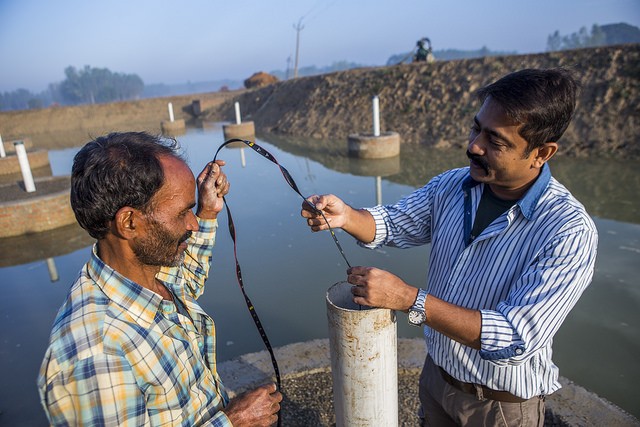By: Marianne Gadeberg
Date: June 3 2016
Source: CGIAR
Interest in investing in sustainability is on the rise. With the Paris Climate Agreement and the launch of the Sustainable Development Goals last year, the political demand to further sustainability across sectors and scales is stronger than ever- a fact that is reflected in current investment trends.
Achim Steiner, executive director of the United Nations Environment Programme, has predicted that 2016 is set to be “the year of green finance”. Numbers from a recent survey in the MIT Sloan Management Review support his projection- with “seventy-five percent [of investors surveyed citing] improved revenue performance and operational efficiency from sustainability as strong reasons to invest.”
Closing the gap between interest and action
The Global Landscapes Forum – the Investment Case (GLF), which takes place in London next week, is an event designed to capitalize on this momentum. It aims to connect senior experts and executives from the private sector, financial services industry, governments and project developers to take investments in sustainable landscapes to the next level.
As GLF claims, currently “the interest in sustainable land use investments exceeds availability of investable projects.” And while their main objective is to bring stakeholders together at this conference in order to bridge this gap, raising awareness about new science and development technologies available, may also serve to contribute.
Here are, for example, four suggestions for investing in sustainable agro-ecosystems, developed and trialed by the CGIAR Research Program on Water, Land and Ecosystems:
1. Resource reuse and recycling
Co-composting is a process that combines fecal sludge from pit latrines with organic waste to produce fertilizer. Investing in such resource reuse can address both waste collection and sanitation challenges for growing cities in developing countries. Currently 1.3 billion tons of waste is generated each year and 1.77 billion people rely on pit latrines. Converting waste to fertilizer will not serve to alleviate public health issues but it will also fosters nutrient recycling by enriching soils, improving organic carbon storage and enhancing overall functionality and productivity of an agro-ecological system. Trials are still being carried out to explore how to make such operations financially viable, but public-private partnership models may be part of the solution.
2. Water funds
Water funds are institutional mechanisms that enable stakeholders, including the private sector, communities, governments and conservation agencies, to collectively share and manage the costs of keeping a watershed clean, healthy, and equally accessible for all its users. For example in Kenya’s Tana River Basin, private sector businesses downstream were able to reward stakeholders upstream for judicious use and pollution abatement so all users could benefit from the watershed for economic, environmental, and social good.
3. Natural infrastructure
Investing in natural infrastructure can help build resilience in landscapes, by protecting businesses and people from the impacts of climate change and extreme weather events. Such nature-based infrastructure projects may for example, include underground storage of floods for irrigation. This concept hinges on finding ways to store excess water underground until it is needed, providing value both in terms of reduced damages from floods and increased resources for irrigation. Natural infrastructure, or traditional infrastructure built in balance with nature, can minimize adverse environmental impacts, can be multipurpose, and is less costly than building infrastructure that seeks to tame nature rather than work with it.
4. Small-scale water management
Investments in smallholder irrigation solutions in Africa have the potential to benefit 185 million people. Investments can be in either technology, start-up funds for small-scale farmers and entrepreneurs, or improved market access and infrastructure. These all hold the promise of large-scale benefits beyond affecting yields and income, including improvement in nutrition security, gender equality, and climate resilience.
Scaling up smartly and overcoming barriers for investments
While new opportunities for investing in sustainability, such as the suggestions listed above, exist and are continuously emerging, a number of challenges persist.
First, the central question that concerns everyone from investor to scientist is how to scale-up such innovations – how do you move from a promising trial to an investment that benefits thousands?
Naturally, investments in complex domains, such as landscapes and agro-ecosystems, will have to be matched case by case to local contexts and geographies. Not everything will work everywhere, which in itself hampers rapid growth of projects. In addition, it may be that scaling up is not always the right option – in some cases, it might be much more effective to invest in small and flexible projects that can easily adapt to local contexts.
Second, the question is whether a set of general, structural barriers for investments in sustainable landscapes can be identified and addressed. That’s what one session during next week’s event seeks to discuss, and it hypothesizes three layers of barriers: weak investment markets locally coupled with challenging policy environments; a disinclination among restoration practitioners to develop investment opportunities; and, finally, reluctance among investors to invest in landscapes.

